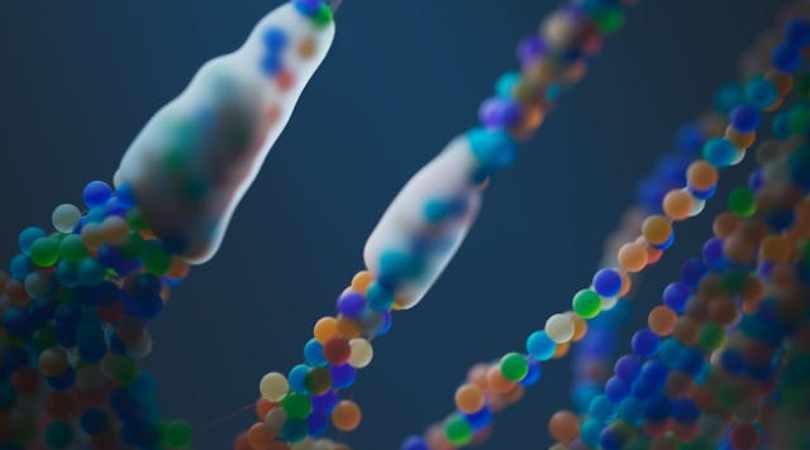Scientists have successfully restored the lost uricase enzyme, a key breakthrough in combating fructose-induced fat formation. This discovery offers new hope for preventing obesity and metabolic disorders by targeting how the body processes sugar and stores fat.
Limited Quantities Available! Order Today and Enjoy Free Shipping on Orders Over $100!
Pre-Diabetes Wake-Up Call: How to Reverse It Before It’s Too Late

Pre-diabetes isn’t a life sentence. But it is a warning. One you don’t want to ignore.
What is Prediabetes?

Pre-diabetes is a state where blood sugar levels are higher than normal, but not yet high enough to be diagnosed as type 2 diabetes. It’s a critical tipping point—a signal that your body’s ability to regulate glucose is starting to falter. Left unchecked, it often progresses silently into full-blown diabetes, with complications that affect the heart, brain, liver, kidneys, and more.
Yet here’s the hopeful truth:
Pre-diabetes is reversible. And the earlier you act, the better your chances.
Common Symptoms of Pre-Diabetes (And Why Many Go Unnoticed)
Most people with pre-diabetes don’t feel “sick.” That’s part of the problem. The signs are often subtle:
- Fatigue, especially after meals
- Increased hunger or sugar cravings
- Blurred vision or occasional headaches
- Dark patches on the skin (often around the neck or armpits)
- Slow wound healing or frequent infections
These can easily be written off as stress, aging, or a “busy life.” But they’re often early signs of insulin resistance—your body’s growing struggle to keep blood sugar under control.
How Long Does It Take to Reverse Pre-Diabetes?
That depends on the approach.
Clinical studies show that with diet and lifestyle changes, many people can normalize their blood sugar in 3–6 months. But it's not just about weight loss or cutting carbs. It's about addressing why the system broke in the first place.
Let’s talk about that.
Common Advice (and What It Misses)
Doctors typically recommend:
- Weight loss (5–10% of body weight)
- More physical activity (150 minutes per week)
- A “healthy” diet low in processed carbs and sugars
This advice helps. But for many, it still doesn’t fully reverse the trend. Why?
Because something deeper is going on—something that affects how your cells use energy, not just how much you eat.
The Hidden Culprit: Fructose and the Cellular Energy Crisis

Recent research shows that fructose—especially from added sugars and high-fructose corn syrup—can trigger a metabolic switch inside the body:
- It lowers cellular energy, making you feel tired
- It increases insulin resistance, even before blood sugar rises
- It spikes uric acid, which worsens inflammation and impairs mitochondrial function
- And it can even be produced inside the body from excess carbs, alcohol, and salty foods
In other words, pre-diabetes isn’t just about sugar in your blood—it’s about the way fructose hijacks your metabolism before glucose even becomes a problem.
Also Read - Controlling Fructose with Diet: Admirable but Restrictive
A Smarter Strategy: Stop Fructose at the Source
To truly reverse pre-diabetes, you need to:
- Cut added sugars and processed carbs
- Eat balanced meals that don’t spike insulin
- Move after eating to help muscles soak up glucose
- Manage stress, which raises cortisol and blood sugar
- Target the fructose pathway—to protect your mitochondria and restore energy balance
That last point is key. It’s why so many people find that even after going sugar-free and losing weight, they still struggle with cravings and fatigue. If the fructose pathway stays active, the problem persists.
Our Approach: Support Your Body’s Natural Balance
At LIV3, we believe real recovery starts at the cellular level. That’s why we created SugarShield—a daily supplement that helps your body:
- Inhibit fructose metabolism with luteolin (a powerful compound shown in preclinical studies to block fructokinase)
- Lower uric acid and support recovery with tart cherry extract
- Restore energy balance so that your cells can respond better to insulin and fuel your life—not your cravings
You still need to move your body. You still need to nourish it.
But when you support your cells from the inside out, everything gets easier.
Ready to Take the First Step?
Reversing pre-diabetes doesn’t require perfection.
It requires understanding the problem—and then giving your body the tools to fix it.
Don’t wait for a diagnosis to start healing.
Start with your energy. Start with your metabolism. Start today.
Disclaimer: The information in this blog reflects personal opinions, experiences, and emerging research. It is not intended as medical or professional advice and should not replace consultation with qualified professionals. The accuracy of this content is not guaranteed. Always seek guidance from a licensed expert before making any health-related decisions.


Chris | 🔬 Founder of LIV3 Health
⚡ A keen researcher dedicated to uncovering the root causes of metabolic dysfunction, the key driver of chronic conditions behind 70% of global deaths. His findings led to science-backed, natural solutions designed to inhibit fructose metabolism.
📢 Follow me on Reddit for insights on metabolic health and the future of wellness! -






